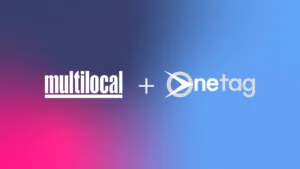Freddie Turner is EMEA Managing Director, MiQ and NDA’s regular columnist.
If the sunsetting of third-party cookies is only just dawning on you then you need to read this.
Google may have pushed back its ban on use of the tracking tech in Chrome to the end of 2024, but that doesn’t give the industry any room for complacency. On the contrary, with other browsers having already ditched third-party cookie support, the time is now to accelerate research and testing for strategies that link emerging cookieless planning tools with your first-party performance data.
In 2023, we anticipate a push by publishers to leverage their valuable first-party data to improve addressability in a post-cookie world. How this shakes out remains to be seen, but most efforts are rightly focused on identifiers as the prime cookie alternative. Those publishers with logged in, authenticated users, leveraging identifiers (such as RampID or UID2) will find solutions that are scalable across the industry, privacy-conscious, and effective.
The industry is waiting on further progress with Google’s Privacy Sandbox, the attempt to create standards for websites to access user information without compromising privacy. While some information has been provided around targeting capabilities like TOPIC (which targets interest-based advertising) and FLEDGE (which aspires to enable remarketing by showing ads at a website based on prior interactions on a different websites), these are still nascent. In 2023, publishers will continue to provide their feedback about the long-term viability of these solutions and we expect significant movement by the end of this year.
Equally important is the work that Google has been doing on their Conversion Measurement API. Conversion tracking provides key insights into users’ actions after viewing or clicking an ad. Marketers can keep track of users who, for example, sign up for an email list, install a mobile app or buy a product, to better measure ad performance and attribution from discovery to conversion. We anticipate more testing and validation of this to gain better insight into the future of post cookie measurement.
On the subject of measurement, it’s clear that metrics like viewability, reach and frequency are past their sell-by date. New and improved measures of performance are rapidly gaining traction among marketers, the chief one being attention. Inherently, cookieless have a greater reliance on attention automatically, which reduces dependency on third-party cookies, and most importantly, provides key indicators of actual engagement and exposure.
Look for privacy-preserving technology to be increasingly adopted for data sharing and collaboration. Data clean rooms (for storing aggregated advertising data) remain a key tool enabling this, and while they can remain technically complex to launch, when used to their full potential can provide powerful privacy first analytics to fuel programmatic activation.
Finally, we expect to see a continued shift in investment towards environments that are not dependent on third party cookies for addressability. AVOD and FAST streaming, via the rapidly growing base of Connected TVs, is becoming programmatically enabled, along with the increased digitization of other more traditional media channels like Out Of Home (DOOH). This provides marketers with impactful media channels that don’t require cookies to power targeting and addressability.
Powering the new world of cookieless digital advertising is why we made AirGrid our first-ever acquisition. UK-based AirGrid is the only platform which enables marketers to connect directly to publishers for privacy-first and cookieless audience creation and activation. It’s a win-win-win scenario. Publishers get better control, access, and monetisation opportunities, brands can apply more precise targeting functionality to key audiences historically out of reach, and consumers’ data never leaves their device.
All of our early testing at MiQ indicates that authenticated IDs are actually more accurate and subsequently better performing than cookies, while geocontextual data provides the richness and scalability you need to find and understand your audience in detail.
Just don’t wait for the 2024 cookie deprecation to catch you off guard. Use 2023 to test, test, test. We recommend that advertisers ask their media partners how much of your current activity is dependent on the use of third party cookies. Allocate budgets to test new targeting capabilities that publishers and ad-tech companies are investing in but don’t expect there to be one post-cookie silver bullet for all the challenges facing marketers.









